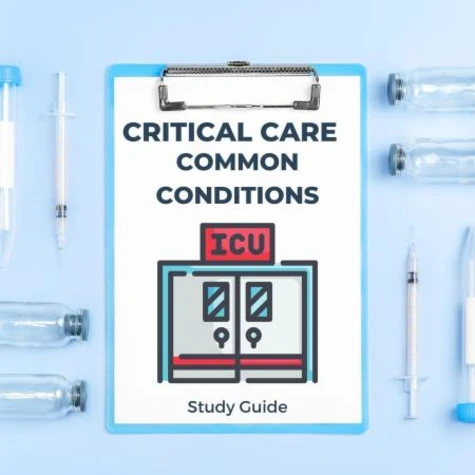Critical Care Common Conditions. Critical Care Essentials
Par :Formats :
Actuellement indisponible
Cet article est actuellement indisponible, il ne peut pas être commandé sur notre site pour le moment. Nous vous invitons à vous inscrire à l'alerte disponibilité, vous recevrez un e-mail dès que cet ouvrage sera à nouveau disponible.
Disponible dans votre compte client Decitre ou Furet du Nord dès validation de votre commande. Le format ePub est :
- Compatible avec une lecture sur My Vivlio (smartphone, tablette, ordinateur)
- Compatible avec une lecture sur liseuses Vivlio
- Pour les liseuses autres que Vivlio, vous devez utiliser le logiciel Adobe Digital Edition. Non compatible avec la lecture sur les liseuses Kindle, Remarkable et Sony
 , qui est-ce ?
, qui est-ce ?Notre partenaire de plateforme de lecture numérique où vous retrouverez l'ensemble de vos ebooks gratuitement
Pour en savoir plus sur nos ebooks, consultez notre aide en ligne ici
- FormatePub
- ISBN8227573735
- EAN9798227573735
- Date de parution14/06/2024
- Protection num.pas de protection
- Infos supplémentairesepub
- ÉditeurBig Dog Books, LLC
Résumé
"Common Conditions in Critical Care" is an essential guide for healthcare professionals who manage critically ill patients. This comprehensive resource covers a wide range of critical conditions encountered in intensive care units, providing in-depth insights into pathophysiology, clinical presentation, and evidence-based management strategies. What's Inside: Overview of Critical Care Medicine: Definition and importance of critical care Scope and types of patients treated The multidisciplinary critical care team Basics of Critical Care: Common equipment and technology in the ICU Overview of critical care procedures Introduction to critical care pharmacology Detailed Sections on Major Conditions: Respiratory Conditions: ARDS, VAP, COPD exacerbations, asthma exacerbations, pulmonary embolism, pneumonia Cardiovascular Conditions: Acute coronary syndromes, heart failure exacerbations, cardiac arrhythmias, hypertensive emergencies, shock states Neurological Conditions: Stroke, status epilepticus, traumatic brain injury, spinal cord injuries, brain death Gastrointestinal Conditions: Acute liver failure, gastrointestinal bleeding, acute pancreatitis, abdominal sepsis/peritonitis, bowel obstructions Renal and Metabolic Conditions: Acute kidney injury, electrolyte imbalances, acid-base disorders, diabetic ketoacidosis, hyperosmolar hyperglycemic state Infectious Diseases: Sepsis and septic shock, complicated intra-abdominal infections, necrotizing fasciitis, catheter-related bloodstream infections Trauma and Surgical Emergencies: Major trauma management, burns, postoperative care and complications, transfusion reactions Special Situations: End-of-life care in the ICU Ethical issues in critical care Pain management in critically ill patients Monitoring and Diagnostics: Hemodynamic, respiratory, and neurological monitoring Laboratory diagnostics and imaging Therapeutic and Supportive Interventions: Mechanical ventilation Renal replacement therapy Nutritional support Future Trends in Critical Care: Technological innovations The evolving role of telemedicine Advances in pharmacology and interventions Key Features Comprehensive Coverage: Detailed descriptions of each condition, including pathophysiology, clinical presentation, and management.
Evidence-Based Management: Practical insights and guidelines based on the latest research and clinical evidence. Visual Aids: Study grids and tables for quick reference and comparison of conditions and treatments. Expert Insights: Written by experienced critical care professionals, ensuring reliable and authoritative information.
Evidence-Based Management: Practical insights and guidelines based on the latest research and clinical evidence. Visual Aids: Study grids and tables for quick reference and comparison of conditions and treatments. Expert Insights: Written by experienced critical care professionals, ensuring reliable and authoritative information.
"Common Conditions in Critical Care" is an essential guide for healthcare professionals who manage critically ill patients. This comprehensive resource covers a wide range of critical conditions encountered in intensive care units, providing in-depth insights into pathophysiology, clinical presentation, and evidence-based management strategies. What's Inside: Overview of Critical Care Medicine: Definition and importance of critical care Scope and types of patients treated The multidisciplinary critical care team Basics of Critical Care: Common equipment and technology in the ICU Overview of critical care procedures Introduction to critical care pharmacology Detailed Sections on Major Conditions: Respiratory Conditions: ARDS, VAP, COPD exacerbations, asthma exacerbations, pulmonary embolism, pneumonia Cardiovascular Conditions: Acute coronary syndromes, heart failure exacerbations, cardiac arrhythmias, hypertensive emergencies, shock states Neurological Conditions: Stroke, status epilepticus, traumatic brain injury, spinal cord injuries, brain death Gastrointestinal Conditions: Acute liver failure, gastrointestinal bleeding, acute pancreatitis, abdominal sepsis/peritonitis, bowel obstructions Renal and Metabolic Conditions: Acute kidney injury, electrolyte imbalances, acid-base disorders, diabetic ketoacidosis, hyperosmolar hyperglycemic state Infectious Diseases: Sepsis and septic shock, complicated intra-abdominal infections, necrotizing fasciitis, catheter-related bloodstream infections Trauma and Surgical Emergencies: Major trauma management, burns, postoperative care and complications, transfusion reactions Special Situations: End-of-life care in the ICU Ethical issues in critical care Pain management in critically ill patients Monitoring and Diagnostics: Hemodynamic, respiratory, and neurological monitoring Laboratory diagnostics and imaging Therapeutic and Supportive Interventions: Mechanical ventilation Renal replacement therapy Nutritional support Future Trends in Critical Care: Technological innovations The evolving role of telemedicine Advances in pharmacology and interventions Key Features Comprehensive Coverage: Detailed descriptions of each condition, including pathophysiology, clinical presentation, and management.
Evidence-Based Management: Practical insights and guidelines based on the latest research and clinical evidence. Visual Aids: Study grids and tables for quick reference and comparison of conditions and treatments. Expert Insights: Written by experienced critical care professionals, ensuring reliable and authoritative information.
Evidence-Based Management: Practical insights and guidelines based on the latest research and clinical evidence. Visual Aids: Study grids and tables for quick reference and comparison of conditions and treatments. Expert Insights: Written by experienced critical care professionals, ensuring reliable and authoritative information.



